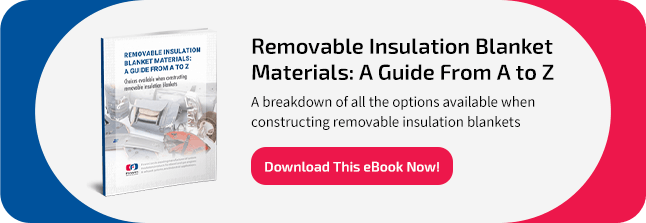Does Insulation Cause Corrosion?
Comments Off on Does Insulation Cause Corrosion?We are commonly asked this question: Does insulation cause corrosion? Given the many expenses already involved in plant maintenance, it makes sense to carefully consider factors that might contribute to corrosion—including improperly maintained insulation.
Corrosion under insulation (CUI) is a well-documented problem in processing plants, occurring when moisture builds up underneath the surface of an insulating sleeve. Depending on the piping and insulation material types and the moisture source, substrates underneath insulation maybe vulnerable to multiple corrosion types, such as:
- Galvanic corrosion
- Acidic corrosion
- Alkaline corrosion
- Chloride corrosion
All of these processes have the potential to severely damage pipes or containers, leading to holes and leaks that can shut down segments of a facility—or, in the worst case scenario, the entire facility.
Unfortunately, no combination of metal and insulation is completely immune to CUI, so vigilant maintenance is critical to prevent these outcomes. Still, certain solutions can minimize the risk, including those that can be easily removed and replaced for routine assessment and repair. Firwin’s removable blanket insulation offers one example of a configuration that minimizes CUI risk without sacrificing the efficacy of the system.
The Problem: Causes and Consequences of CUI
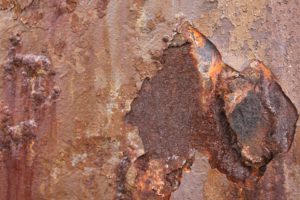 Part of the difficulty in preventing CUI is that it can occur under so many conditions. Factors that may contribute to heightened risk, include:
Part of the difficulty in preventing CUI is that it can occur under so many conditions. Factors that may contribute to heightened risk, include:
- A constant temperature above freezing but below boiling, which is the perfect environment for condensation to form.
- Subpar insulation that contains corrosive compounds or that degrades quickly.
- Insulation placed improperly near sources of water.
The biggest risk factor for CUI, however, is the presence of certain chemicals that react with the metal’s surface to erode its structure. This can take several forms, depending on the specific compounds present. For example:
- Galvanic corrosion is common when the insulation becomes moist in the presence of either an electrolyte or a salt. When this happens, a current can flow between the soaked insulation and the metal surface, inducing serious surface damage.
- The presence of strongly basic or acidic substances can also be problematic. When granular insulations absorb both water and an alkali or acid, the chemicals can remain on the insulated metal’s surface even as the water evaporates, leading to alkaline or acidic corrosion.
- Chloride from industrial processes or natural sources is particularly harmful to stainless steel surfaces, especially when it becomes imbued in a wet insulating sleeve. Chemical corrosion can occur even when the processing equipment itself does not contain harsh chemicals—chloride, for instance, can come from rainwater, a common source of CUI.
While different factors are responsible for each of these categories of CUI, all corrosive damage may be worsened by rigid or permanent insulation. Ideally, technicians should be able to regularly remove insulation to inspect the underlying metal for signs of wear. Failure to do so allows chemical damage to compound until the vessel is irreparable.
Additionally, a permanently insulated fixture might accumulate corrosive damage more quickly as buildup can’t easily be cleaned during routine maintenance. These challenges are especially pronounced in process facilities that routinely handle high quantities of potentially corrosive chemicals, or in piping that experiences routine exposure to the elements.
The Solution to CUI
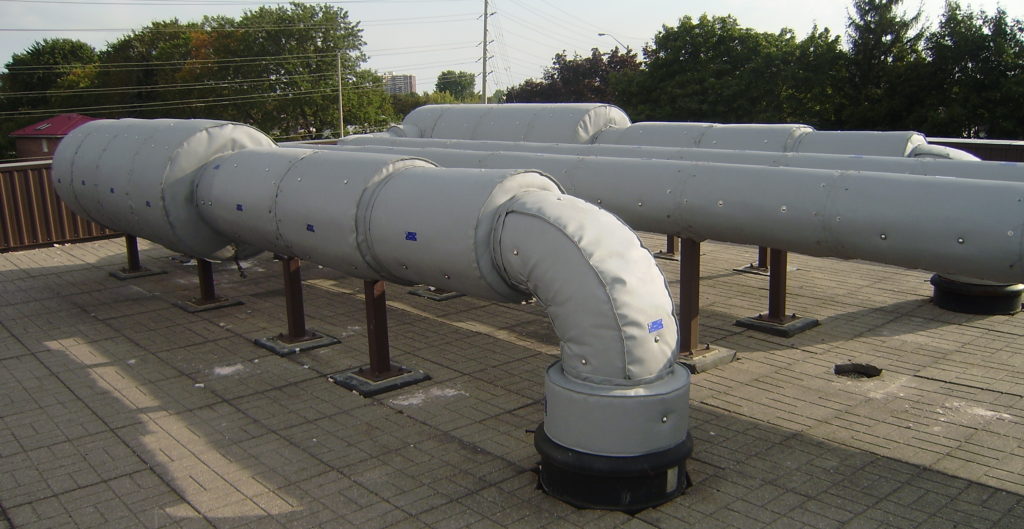 The primary solution to CUI is to replace rigid or permanent insulation with a removable solution. In doing so, it becomes much easier to monitor the state of process piping without causing additional damage to the surface.
The primary solution to CUI is to replace rigid or permanent insulation with a removable solution. In doing so, it becomes much easier to monitor the state of process piping without causing additional damage to the surface.
The benefits of this investment are substantial. Removable insulation not only makes routine inspections and maintenance easier, but it also facilitates easier repair. Permanent insulation is difficult to replace without damaging the pipe, but removable covers can easily be taken off of individual segments of machinery or process piping when the exterior begins to breakdown. This advantage can add up to substantial savings over the lifetime of your equipment.
Firwin Insulation Solutions
All of Firwin’s removable insulation covers are engineered for easy access without sacrificing performance. Our covers cling closely to the piping or vessel for a snug fit that repels moisture. Lower quality removable blankets lack this excellent fit, which can sometimes hasten corrosion (rather than preventing it) by allowing additional avenues for moisture to enter.
We produce removable insulation solutions to fit various engine parts and piping systems, including diesel engines that generate enough heat to create a higher risk of CUI. Our solutions not only contain and manage this heat, but do so while mitigating the risk of corrosion.
To learn more about our completely customizable options for insulation and corrosion protection, get in touch with Firwin’s team today.
Insulation Materials
Comments Off on Insulation MaterialsGood insulation doesn’t just add layers around heat sources. It must closely fit the dimensions of the components to minimize heat loss and increase ease of use.
But when it comes time to decide the makeup of your insulation blanket, do you know anything about the materials that go inside?
The team at Firwin Corporation has extensive knowledge about insulation materials and is able to carefully match your equipment with custom insulation covers and liners, made of materials best suited for your unique application. We provide a wide selection of insulation materials to customers, ensuring that you obtain an insulation solution that fits your equipment and your facility’s needs.
Factors to Consider
Choosing the right material for your insulation covers is essential—and not every material is suited for every application. Here are five different factors that would affect material selection:
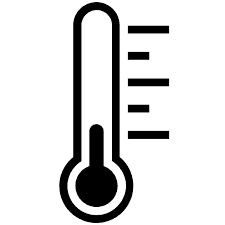 1. Maximum Temperature Range
1. Maximum Temperature Range
Perhaps one of the most important considerations in insulation materials is the temperature range. Insulation materials should meet or exceed the high end of your standard operating temperatures and should account for potential high-temperature extremes. Insufficient insulation can be costly and dangerous.
 2. Protection from the Elements
2. Protection from the Elements
Gauge your equipment’s exposure to elements such as water, debris, chemicals, and UV radiation. You need to choose materials for your insulation covers which can withstand these environmental factors without degrading. While some protective elements may be added to insulation materials, others may cause stiffness or impact ease of use. All our materials have their own set of properties, but some are better at handling extreme environments than others. Depending on your equipment’s exposure, one kind of material may be better suited as insulation than others.
 3. Safety and Regulatory Requirements
3. Safety and Regulatory Requirements
It’s important to always check the manufacturer’s certifications for facility equipment, especially where related to safety. Some industries also have more exhaustive UL and safety standard requirements than others. Firwin guarantees that our insulation covers are made with high-quality materials and our company is ISO 9001-certified. Our team of engineers and technicians work hard to meet or exceed all safety and regulatory requirements. Some safety requirements like fire retardancy will impact which materials we choose for your insulation based on the material properties.
 4. Space
4. Space
Space can quickly limit the type and amount of insulation you can add to a given system. You’ll want to look for thinner, flexible materials for use near tight system configurations and controls, but will have less restrictions on material type in more spacious areas.
5. Touch Temperature
![]()
While the maximum temperature factor details how much heat your insulation covers can safely handle, the “touch” temperature factor details the handling temperature on the outside of the cover. Some insulation materials will only reduce ambient heat in environments that just need lower—but not safe to touch—temperatures. Other insulation materials can thoroughly dampen heat in applications where the covers must be touched throughout the day.
While small or constrained environments may demand thinner material and/or slightly higher temperatures, a safe contact rating is still a priority for our manufacturing team. When you’re considering an adequate exterior temperature for your insulation material, it’s important to remember that fabric is safer at high temperatures than metal. Fabric doesn’t conduct heat as well as metal, so it must exceed 203° F (95°C) before becoming unsafe to touch (UL 2200).
Common Insulation Materials
So what insulation materials are available when designing an insulation? Some common materials/fabrics for commercial and industrial insulation covers include:
Aerogel
This top-tier material outperforms both wool and fiberglass. A 0.5-inch thick cover of Aerogel can perform just as well as a 1.5-inch thick cover of fiberglass, so facility managers often use this material in tight-fit environments. Aerogel is also very lightweight, which makes it ideal for use near fragile or light components. The material is expensive, however, and has a maximum temperature limit of 1100° F (593°C) .
CMS Wool
Cellulose material solutions (CMS) wool is compact, mitigates oxygen transfer through the material, and features fire retardant properties along with its high insulation value. Other properties include:
- A maximum temperature limit of 2192° F (1200° C)
- Odorless
- Won’t contribute to corrosion
- Sound absorbent
- Resistance to decay, vermin, and mold
Fiberglass
Fiberglass is one of the most common insulative materials used in the fabrication of insulation blankets. Just like CMS wool, it’s odorless, won’t corrode metal, can absorb sound, and resists rot or vermin damage. However, it has a lower maximum temperature limit of 1200° F (649°C). Fiberglass can also harm workers through constant exposure if they don’t have adequate safety equipment covering their eyes, skin, or breathing passages.
Mineral Wool
The broad category of mineral wool materials includes:
- Glass wool (made from recycled glass)
- Rock wool (made from basalt)
- Slag wool (most common mineral wool, made from steel mill slag)
Mineral wool has good thermal resistance, doesn’t absorb moisture, and can muffle a reasonable amount of sound. Its maximum temperature threshold is 1200° F (649°C) .
Download Firwin’s Insulation Materials Guide
Firwin’s Insulation Materials
Firwin Corporation uses specialty materials to keep your facility’s equipment well insulated and safe for workers. Our high-performance materials include:
Firwin 2000+ Insulation
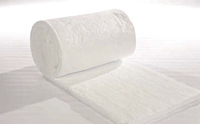 This material has excellent thermal resistance, as well as resistance to chemicals or contamination. It retains its insulative properties even after oil or water spills once the material has dried. Firwin 2000+ is a patented wool material made from long AES fibers. It features low biopersistence and high maximum temperature thresholds.
This material has excellent thermal resistance, as well as resistance to chemicals or contamination. It retains its insulative properties even after oil or water spills once the material has dried. Firwin 2000+ is a patented wool material made from long AES fibers. It features low biopersistence and high maximum temperature thresholds.
Properties
- Rated Temperature 2192ºF (1200ºC)
- Absorbs sound
- Easy to install
- Excellent thermal stability and insulation
- High strength levels and good tear resistance
- Low heat storage
- Low irritant levels and increased softness
- Low thermal conductivity
- Minimal outgassing due to cleaning and organic matter removal during production
- Solubility in body fluids
Applications
This material is commonly used for the following applications:
- Acoustical service
- Annealing furnace linings
- Cryogenic insulation
- Expansion joint packing
- Fire protection
- Furnace kiln reformer and boiler lining
- Furnace door lining and seals
- Furnace repair
- Investment casting mold wrap
- Laboratory ovens
- Removable insulation blankets
- Stress-relieving blankets
Board Insulation 15080 RHF™40
This stiffer material contains basalt rock and slag. It’s a non-combustible material with excellent fire and thermal resistance, water-repelling properties, and vapor permeability. It has a melting point of 2150° F (1177°C) . This mineral wool can be safely used in high-heat applications up to 1200° F (649°C).
Properties
- Fabrication and lamination options available
- Chemically inert and non-corrosive
- Non-combustible
- Lightweight
- Made from natural and recycled materials; free from CFC and HCFC
- Low moisture absorption
Applications
Facility managers can use Board Insulation 15080 RHF™40 for multiple applications. Our team can manufacture the material to match different specifications without any loss in fire, thermal, and water resistance. One of the most common applications is pipe and tank wrapping thanks to the materials moisture resistance and insulating properties.
Rockwool Board Insulation 8LB
This non-combustible product is also composed of basalt rock and slag. It features strong water resistance while still maintaining vapor permeability. Its high melting point of 2150°F (1177°C) gives it excellent fire and thermal resistance.
Properties
- Easy to install and use
- Fabrication and lamination options available
- Chemically inert and non-corrosive
- Non-combustible
- Lightweight
- Made from natural and recycled materials; free from CFC and HCFC
- Low moisture absorption
Applications
This material resists physical damage and compression from impacts. It’s also a useful insulation solution for applications that require excellent thermal, fire, and moisture damage resistance.
Firwin Vermiculite Coated Fiberglass Fabric
This woven fiberglass material has a medium weight and good resistance to high temperatures. It also features a vermiculite compound coating that adds thermal resistance.
Properties
- Can withstand continuous heat during long-term applications
- May be subject to some physical degradation after extended exposure to high heat
- Has a continuous temperature threshold of 1200° F (649°C) and an intermittent threshold of 1500° F (816°C)
Applications
- Flame and high-heat barriers
- A replacement for silica or ceramic fabrics
Firwin 1200 Insulation Mat
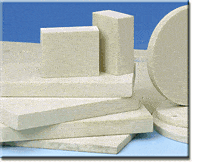 This glass fiber material is mechanically bonded from long, uniform fibers. The needling process creates a highly uniform material that doesn’t include binders. This material provides long-term insulation in the face of high temperatures up to 1200° F (649°C).
This glass fiber material is mechanically bonded from long, uniform fibers. The needling process creates a highly uniform material that doesn’t include binders. This material provides long-term insulation in the face of high temperatures up to 1200° F (649°C).
Properties
- Easy to install due to drapability and flexibility
- Does not contribute to metal corrosion, decay, or mold
- Resistant to vermin-related damage
- Muffles sound and vibration
- Odorless
Get More Insulation Material Information from Firwin
Firwin Corporation specializes in high-quality, customizable insulation covers and other insulation solutions. We create covers for a wide variety of industries and applications, including general industrial applications, diesel and gas engines, and exhaust systems.
Download our eBook, “Removable Insulation Blanket Materials — A Guide from A to Z,” for more information on selecting the best insulation blankets and materials for your facility.
What to Know About Boiler Insulation
Comments Off on What to Know About Boiler Insulation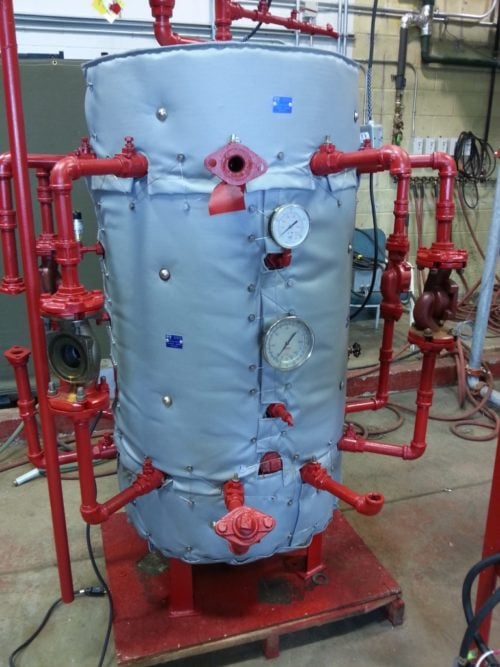 According to the guidelines set by the U.S. Department of Energy, any surfaces with temperatures above 120°F should always be insulated. This includes all parts of boilers, such as doors, steam drum covers, and piping. While frequently overlooked, boiler pipe insulation is essential; proper boiler insulation leads to energy conservation, employee safety, and increased efficiency in all types of operations.
According to the guidelines set by the U.S. Department of Energy, any surfaces with temperatures above 120°F should always be insulated. This includes all parts of boilers, such as doors, steam drum covers, and piping. While frequently overlooked, boiler pipe insulation is essential; proper boiler insulation leads to energy conservation, employee safety, and increased efficiency in all types of operations.
The Benefits of Boiler Pipe Insulation
Significant heat loss can cause a number of issues, including loss of money and hazardous work environments. Installing heating pipe insulation is an excellent way to prevent these problems and take advantage of a wide variety of benefits.
Cost Savings
Loss of heat means loss of energy, which leads to higher expenses. If boiler pipes are left exposed as they carry heated fluid, more energy is needed to keep the boiler functioning at the optimal level. Boiler pipe insulation will prevent the loss of thermal energy and maintain low energy costs.
Increased Efficiency
When you lose significant amounts of heat, the system needs to work harder to reach high temperatures and keep fluids heated. By insulating boiler pipes, you ensure your boiler can heat up more easily and rapidly. This saves both time and money.
Energy Savings
Insulated boiler pipes can raise hot water temperatures by 2° F to 4° F higher than uninsulated pipes. In the long term, this can lead to 3-4% energy savings every year. If you’re interested in learning exactly how much money you might be losing due to lack of insulation, there’s now a way for you to find out: the National Mechanical Insulation Committee has developed a calculator that lets you determine potential energy savings from both bare and insulated pipes, as well as flat surfaces.
Safety
Proper insulation creates a safer work environment for you and your employees. When boiler pipes are left uninsulated, they become extremely hot. Employees working near these structures are then at risk for serious burns and other injuries if they come into contact with the heated component. With proper insulation, you will protect your employees from injury and prevent costly lawsuits.
Material Considerations
When deciding to install boiler pipe insulation, it is vital to consider the different types available. There are two main options from which to choose: removable or permanent. Here are some details about each one’s specific functions and benefits to help you pick the best option for your needs.
Removable Insulation
 Removable insulation is incredibly flexible, making it ideal for situations where you frequently need to inspect or maintain your system. It is quick and easy to install and can be removed whenever you need access to your component. This makes it a convenient way to effectively reduce your heat and energy loss without committing to a permanent fixture.
Removable insulation is incredibly flexible, making it ideal for situations where you frequently need to inspect or maintain your system. It is quick and easy to install and can be removed whenever you need access to your component. This makes it a convenient way to effectively reduce your heat and energy loss without committing to a permanent fixture.
The harnesses of these removable insulation blankets can be made from a number of different materials, including:
- Snaps
- Springs
- Velcro
- Straps
Permanent Insulation
Permanent insulation is common in situations where consistent access to the system is not needed. This type of insulation is durable and sturdy, permanently enclosing the component being insulated. It is ideal for small spaces that require long-term insulation but do not need to be frequently accessed.
Additional Factors
There are a variety of factors that go into choosing the appropriate material for your insulation :
- The maximum temperatures reached by the insulated component
- Whether the component is indoors or outdoors
- Potential exposure to the elements
- Ambient temperatures
- Desired “touch temperature” of the component’s outer surface
- Safety requirements
- Desired system heat retention
- Space limitations
- Necessity and frequency of insulation removal
- Regulatory requirements
- Aesthetic requirements
Contact Firwin for Boiler Pipe Insulation
At Firwin, we manufacture a wide range of insulation products for every need, from boiler pipe insulation to industrial applications. Since 1982, we have been creating high quality products to ensure the safety and peace of mind of our clients.
To learn more about our boiler pipe insulation, contact us today to speak to our experts and discuss your specific project.

